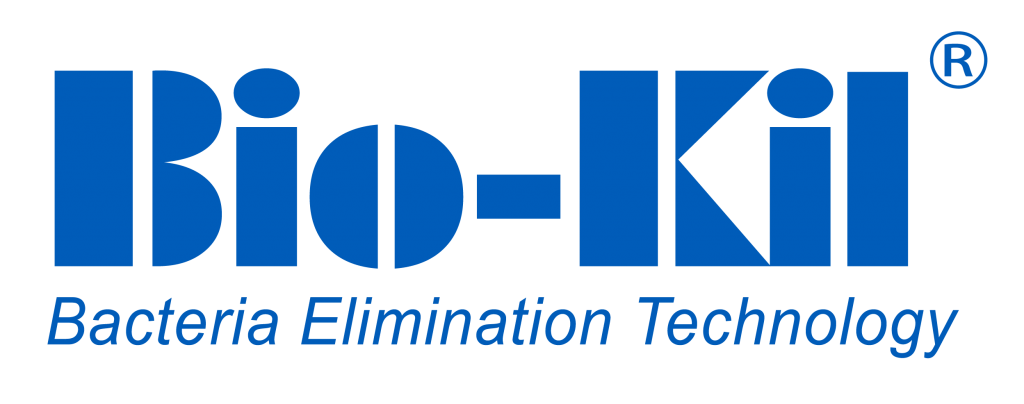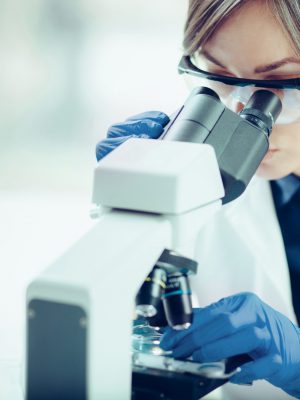
A Brief
Introduction
Bio-Kil solutions include 1. Air series solution 2. Water series solution 3. Textile and surface series solution 4. Dynamic microorganism elimination system. Each of the solutions can be integrated with hospitals’ infrastructure, and they can be modified after discussion with infection control professionals. After implementation, our team will carry out routing monitoring to ensure certain microorganism is kept on check.
Bio-Kil technology integrated years of knowhow in catalyst development. By binding microorganism inhibiting material Bio-Kil with base material, given the material microorganism inhabitation ability. Through “catalyst like” binding technic, Bio-Kil solution can be more durable and still being effective in inhibiting microorganism for long period of time. This allows reduction on maintenance costs.
Targeting Healthcare Acquired Infections
Healthcare acquired infections is a major concern in many medical facilities. Bio-Kil solutions offer a systematic and holistic approach to address HAI. By cutting down transmission pathways and reduction of microorganism counts, Bio-Kil solutions can be effective on dealing with Legionella pneumophila, MRSA and outbreak within medical environment, lowering chance to contract an infection, thus protecting the patients and medical professionals.
Bio-Kil
Principle


Cargico
Cargico integrates nanotechnology with catalyst expertise to treat and bind selected surfaces with antimicrobial molecular, making the surface with antimicrobial property. Therefore, once microorganism contacts with the surface, it will be inhibited, so the growth of microorganism can be contained
Environmental Settings
Red Zone
The Red Zone is defined as the area has highest infection risk for both medical professionals and patients. Red Zone establishes when a major pandemic outbreak is identified by local or regional CDC. The Red Zone usually are places within a medical facility that with infected patients or gateway area like entrances of hospitals or transportation hubs. Red Zone is the frontline of fighting outbreak of diseases. Additional advance protection is preferable for medical professionals who work in proximity to sources of infection.
Bio-Kil solution has been worked as frontline protection measure since the SARS outbreak in 2003. Bio-Kil solution has been installed in isolation room air filtration system. Also, medical professionals wear Bio-Kil treated personal protective gears to further reduce the opportunity in contacting the pathogen.
After SARS, Bio-Kil solutions for Red Zone has been successfully adapted by hospitals and transportation hub with applications specifically in isolation rooms, infection screening stations (both hospital and transportation hub) and labs (including lab animal housing unit).
Medical Environment
The Medical Environment is defined as hospital or clinic. In medical environment, Healthcare-acquired Infection, HAI or formally known as Nosocomial Infection, is a major concern for medical professionals. HAI can happen in clinical setting such as hospital, clinic, nursing home, laboratory etc. According to US CDC estimation, each year about 1.7 million cases of HAI, and about 99,000 deaths. HAI leads to financial burden of patients and their family due to medical treatment. HAI also takes away medical resources and manpower.
Bio-Kil solutions has been implemented as a system solution to address the Healthcare-acquired Infections by hospitals in both Singapore and Taiwan. Working closely with CDC professionals in hospitals, Bio-Kil solutions will be strategically installed and implemented in transmission key nodes to reduce the concentration of microorganism, therefore lowering risks of HAI. Bio-Kil solutions include a regular monitoring of microorganism, allowing CDC professionals to adjust strategies according to the results.
Bio-Kil solutions are used in intensive care unit (ICU), respiratory care center (RCC), burn ward (BW), organ transplant unit, operation room and general ward.
Non-Medical Environment
The Non-medical Environment is defined as public spaces that are not require medical level protection. After SARS in 2003, many of the public spaces started to implement Bio-Kil solutions to provide additional protection to the general public. Bio-Kil solution is implemented in many public spaces to hinder the airborne transmission in area with high population density.
Bio-Kil solutions can be implemented in schools, office building, hotels, transportation hub.
